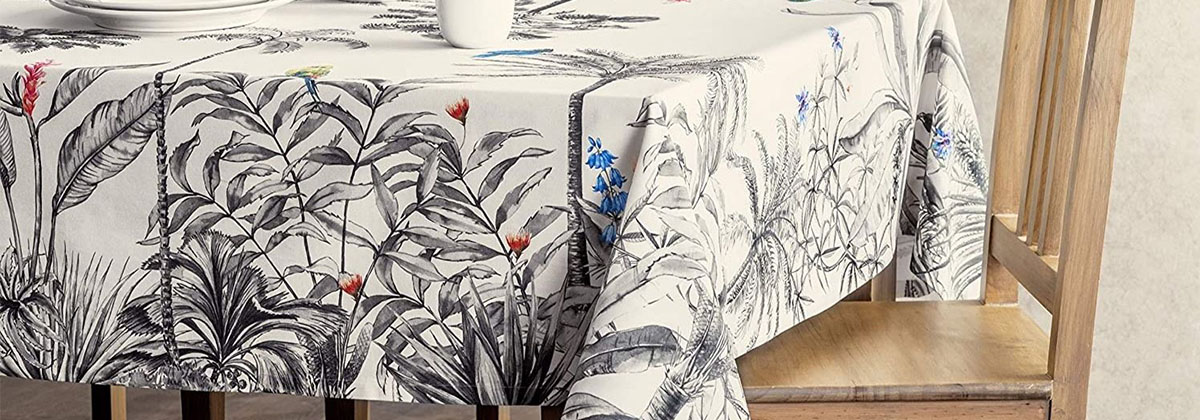30 Sep Proper Washing Methods for Different Tablecloths (Part 1)
The houses are full of beautiful and varied tablecloths that increase the beauty of the tables. You’re always looking for the right way to maintain and wash these tablecloths. It would help if you were careful about which washing method damages the beaded or Termeh tablecloths, deforms their pattern or fades the colour of their fabric. This article will tell you the correct way to wash and maintain different types of tablecloths.
Termeh tablecloths
Termeh is one of the most popular tablecloths that many people are particularly interested in them. These tablecloths are often made of synthetic silk. They are very thick and durable due to their long fibres and high entanglement. Despite their thick appearance, they’re vulnerable to light and moisture. Their dark appearance shows paleness quickly. The best ways to wash Termeh are:
- Drying and steaming, especially natural silk Termeh.
- Hand wash
If you wash them at home, be sure to use cold water. Detergents should be mild and shouldn’t contain compounds such as enzyme powders, bleach or other bleaching agents; Because It’s incredibly vulnerable. Don’t rub the Termeh tablecloth, but gently put it in the sink and soak it in water and detergent solution.
- The best way to dry a Termeh tablecloth is to place it outdoors and spread it horizontally; Because the whole surface dries simultaneously.
- It would help if you ironed them from the back on a cotton cloth.
- Never place desktops in areas that are exposed to sunlight during the day; because they fade quickly.
Embroidery
Embroidery tablecloths usually have a bright background and colourful embroidery. Its fabric is mainly made of linen and sometimes more expensive than velvet. To take care of them, follow the tips below.
- Don’t let dust sit on them for a long time. Be sure to shake them outdoors once a month to find a clean surface.
- First, when you decide to wash a coloured embroidery tablecloth, rub it with a damp white cotton cloth. If they bleed, don’t wash them.
- To wash this tablecloth, soak it several times in lukewarm water and then remove it. Finally, for better cleaning, soak in a solution of lukewarm water and white vinegar for a few seconds and then rinse.
- To dry the embroidered tablecloths, hang them in the open air. Then iron them from behind with a bit of moisture to keep them soft.
Beadwork
Beadwork and other sensitive tablecloths are usually made of velvet or linen. To maintain them, you should take the essential points of washing, staining and ironing these exquisite handicrafts seriously:
- Never wash beadwork tablecloths; shake them regularly and place them outdoors instead. Shake handmade velvet tablecloths outdoors and tap them lightly with a stick. This movement is the best way to remove all dust from the texture of velvet fabrics.
- To wash velvet tablecloths, soak them in lukewarm water several times and then drain the water. Repeat this process to get clear water. Be careful not to rub or squeeze the tablecloth. Instead of twisting, gently tube it into a few towels to absorb the moisture well to dehydrate.
- Large tablecloths don’t fit easily in the sink. So before soaking, fold it into a square or triangle.
- Use soap instead of detergent to wash them. Make a very dilute solution of soap and lukewarm water and soak the velvet tablecloths in it. Be sure to rinse it several times.
- To dry beadwork tablecloths, hang them outdoors and then iron them when they are damp. You must do ironing from behind with a white cotton cloth.




Sorry, the comment form is closed at this time.